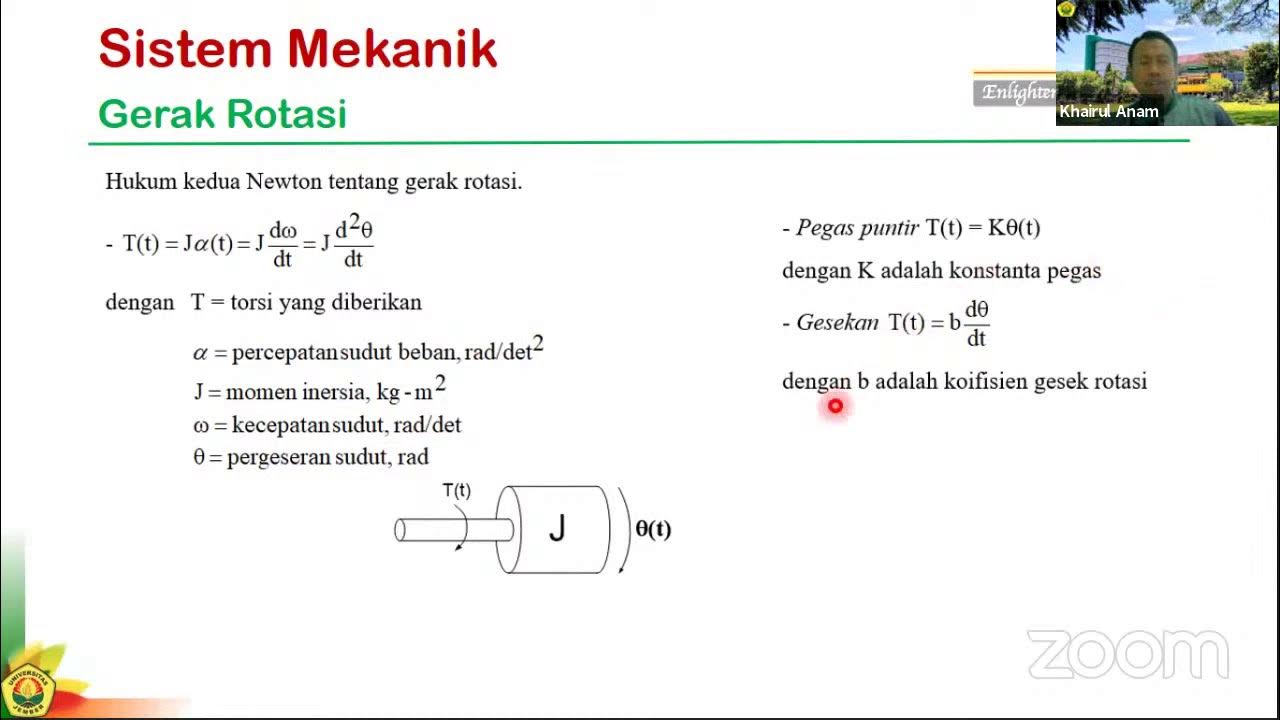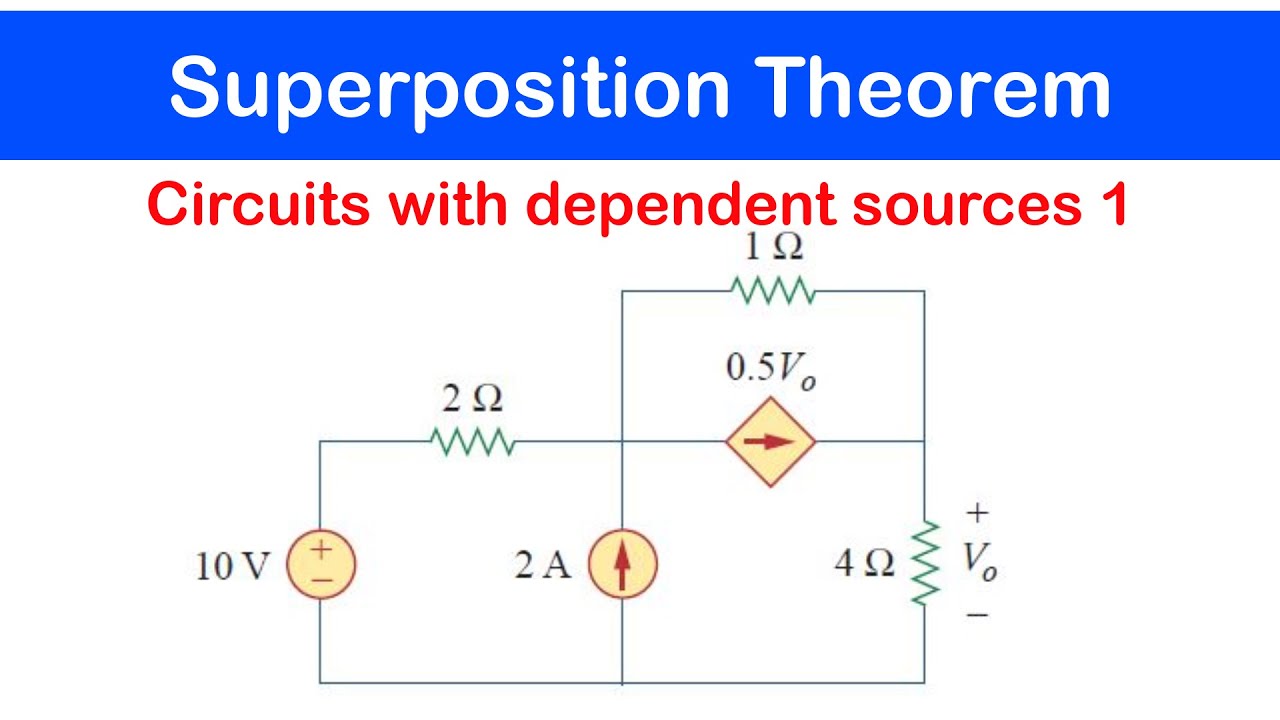Teorema Thevenin
Summary
TLDRIn this video, the Thevenin Theorem is explained in the context of simplifying complex linear circuits. The presenter demonstrates how to reduce circuits with multiple voltage or current sources to a simpler equivalent circuit, consisting of Thevenin voltage (Vth) and Thevenin resistance (Rth). Various steps are shown, including removing the load, deactivating independent sources, and calculating both Vth and Rth. The video concludes with practical examples of finding current through the load using the Thevenin equivalent, illustrating the ease of solving complex circuits with this theorem.
Takeaways
- 😀 Thevenin's Theorem simplifies complex linear circuits by reducing them to an equivalent circuit with a Thevenin voltage (Vth) and Thevenin resistance (Rth).
- 😀 Vth is the open-circuit voltage across the two terminals where the load is connected, and Rth is the equivalent resistance seen from those terminals with all independent sources turned off.
- 😀 To find Rth, remove the load and turn off all independent sources: voltage sources become short circuits and current sources become open circuits.
- 😀 Thevenin's Theorem is applicable only to linear circuits that have two terminals between which the load can be connected.
- 😀 By applying Thevenin’s Theorem, complex circuits with multiple voltage and current sources can be replaced with a simpler two-component circuit for easier analysis.
- 😀 The simplified Thevenin equivalent circuit consists of a voltage source (Vth) in series with a resistor (Rth) and is used to calculate the current or voltage across the load.
- 😀 To calculate Vth, remove the load and calculate the open-circuit voltage across the terminals.
- 😀 After determining Vth and Rth, the current through the load can be calculated using Ohm’s Law (I = V/R).
- 😀 In the provided example, the Thevenin equivalent was determined as Vth = 30V and Rth = 4Ω, simplifying the calculation of the current through the load.
- 😀 Thevenin’s Theorem makes it easier to solve for current or voltage in circuits with complex configurations by reducing them to a simple equivalent circuit.
- 😀 The script provides a step-by-step process for applying Thevenin's Theorem to a real example, showing how to find the equivalent resistance and voltage, and ultimately calculate the load current.
Q & A
What is Thevenin's Theorem used for in electrical circuits?
-Thevenin's Theorem is used to simplify complex linear circuits into an equivalent circuit with a single voltage source (Vth) in series with a resistance (Rth), making it easier to analyze circuits with two terminals and a load.
How do you determine the Thevenin voltage (Vth) in a circuit?
-To find the Thevenin voltage (Vth), you first remove the load from the circuit and then calculate the open-circuit voltage between the two terminals where the load was connected.
What does Rth represent in Thevenin's Theorem?
-Rth represents the Thevenin resistance, which is the equivalent resistance seen from the two terminals when all independent sources are turned off (voltage sources become short circuits, and current sources become open circuits).
What are the steps involved in finding Rth (Thevenin resistance)?
-To find Rth, you remove the load, turn off all independent sources (voltage sources become short circuits and current sources become open circuits), and then calculate the equivalent resistance seen from the terminals.
What happens to independent sources when calculating Rth?
-When calculating Rth, independent voltage sources are replaced with short circuits, and independent current sources are replaced with open circuits.
What is the role of the load resistor in Thevenin's Theorem?
-The load resistor is the component connected to the two terminals of the original circuit. Once the Thevenin equivalent is found, the load resistor is reconnected to the simplified circuit to determine the current passing through it.
How is the Thevenin equivalent circuit represented?
-The Thevenin equivalent circuit is represented by a voltage source (Vth) in series with a resistance (Rth), with the load resistor connected to the terminals of this simplified circuit.
Can Thevenin's Theorem be applied to any linear circuit?
-Yes, Thevenin's Theorem can be applied to any linear circuit that has two terminals, allowing you to simplify complex circuits with multiple sources and resistors into a simpler equivalent circuit.
What is the significance of finding the Thevenin equivalent when solving circuit problems?
-Finding the Thevenin equivalent simplifies complex circuit analysis by reducing the circuit to a simple voltage source and resistance, making it easier to calculate currents and voltages in the load resistor.
What was the result of the example calculation for a load resistor of 6Ω?
-In the example, for a load resistor of 6Ω, the equivalent resistance was 10Ω (4Ω + 6Ω), and the current through the load was calculated to be 3A using Ohm’s Law, with a voltage source of 30V.
Outlines

This section is available to paid users only. Please upgrade to access this part.
Upgrade NowMindmap

This section is available to paid users only. Please upgrade to access this part.
Upgrade NowKeywords

This section is available to paid users only. Please upgrade to access this part.
Upgrade NowHighlights

This section is available to paid users only. Please upgrade to access this part.
Upgrade NowTranscripts

This section is available to paid users only. Please upgrade to access this part.
Upgrade NowBrowse More Related Video

Superposition Theorem (with example)(Unit 1 DC circuits) BEE

Superposition (Circuits for Beginners #13)

SK#2c: Pemodelan Sistem dengan Persamaan Differensial

Contracting the Extended Euclidean Algorithm (Proof)

☑️19 - Superposition Theorem: Circuits with Dependent Sources 1

What is Laplace Transform? Why Laplace Transform is used in Circuit Analysis?
5.0 / 5 (0 votes)